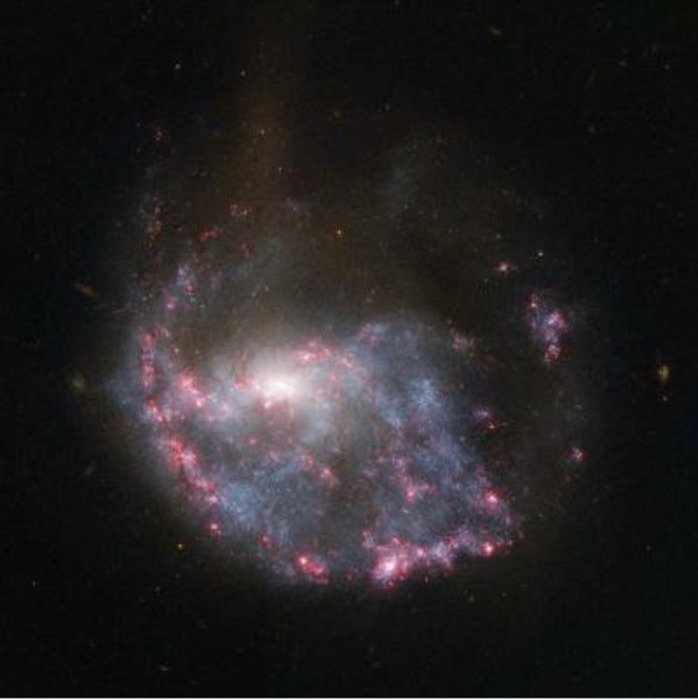PARIS, Dec. 6 (UPI) -- The Hubble telescope has captured an image of a distant galaxy that was a target bulls-eye in a cosmic collision with another galaxy, European astronomers say.
The image of galaxy NGC 922 reveals not a normal spiral galaxy but one whose arms are disrupted, with a stream of stars extending outward and a bright ring of nebulae encircling the core, a release from the European Space Agency's Paris headquarters reported Thursday.















